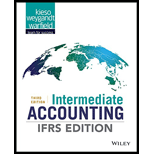
Current liability: Current liability refers to the debts of an organization. It is an obligation of the company that is due to be paid within one year.
Long-term debt: Long-term debt refers to the obligations of a firm that are due and has a due period exceeding a year.
To determine the difference between current liability and long-term debt.
Explanation of Solution
Both current liabilities and long-term debts act as a focal point of the financial planning efforts of an organization.
Current liabilities are obligations to be paid within a year. If the debts are paid within the stipulated period, the short-term liability of the company is found to be positive. This means that the company meets the cash flow needs and it is considered as a going concern.
Long-term debts are obligations for which the due period exceeds 1 year. If the debts are paid within the stipulated period, the long-term liquidity of the company will be positive. The probability of meeting the financial needs of the company turns to be favourable.
Hence, the difference between current liability and long-term debt are explained above.
Want to see more full solutions like this?
Chapter 13 Solutions
Intermediate Accounting: IFRS Edition
- I need help finding the accurate solution to this general accounting problem with valid methods.arrow_forwardPlease provide the correct answer to this financial accounting problem using accurate calculations.arrow_forwardI need guidance with this general accounting problem using the right accounting principles.arrow_forward
- Can you help me solve this general accounting question using the correct accounting procedures?arrow_forwardI am searching for the correct answer to this general accounting problem with proper accounting rules.arrow_forwardI am searching for the correct answer to this general accounting problem with proper accounting rules.arrow_forward
- I am trying to find the accurate solution to this general accounting problem with appropriate explanations.arrow_forwardCan you solve this general accounting problem with appropriate steps and explanations?arrow_forwardCan you explain this general accounting question using accurate calculation methods?arrow_forward

 AccountingAccountingISBN:9781337272094Author:WARREN, Carl S., Reeve, James M., Duchac, Jonathan E.Publisher:Cengage Learning,
AccountingAccountingISBN:9781337272094Author:WARREN, Carl S., Reeve, James M., Duchac, Jonathan E.Publisher:Cengage Learning, Accounting Information SystemsAccountingISBN:9781337619202Author:Hall, James A.Publisher:Cengage Learning,
Accounting Information SystemsAccountingISBN:9781337619202Author:Hall, James A.Publisher:Cengage Learning, Horngren's Cost Accounting: A Managerial Emphasis...AccountingISBN:9780134475585Author:Srikant M. Datar, Madhav V. RajanPublisher:PEARSON
Horngren's Cost Accounting: A Managerial Emphasis...AccountingISBN:9780134475585Author:Srikant M. Datar, Madhav V. RajanPublisher:PEARSON Intermediate AccountingAccountingISBN:9781259722660Author:J. David Spiceland, Mark W. Nelson, Wayne M ThomasPublisher:McGraw-Hill Education
Intermediate AccountingAccountingISBN:9781259722660Author:J. David Spiceland, Mark W. Nelson, Wayne M ThomasPublisher:McGraw-Hill Education Financial and Managerial AccountingAccountingISBN:9781259726705Author:John J Wild, Ken W. Shaw, Barbara Chiappetta Fundamental Accounting PrinciplesPublisher:McGraw-Hill Education
Financial and Managerial AccountingAccountingISBN:9781259726705Author:John J Wild, Ken W. Shaw, Barbara Chiappetta Fundamental Accounting PrinciplesPublisher:McGraw-Hill Education





